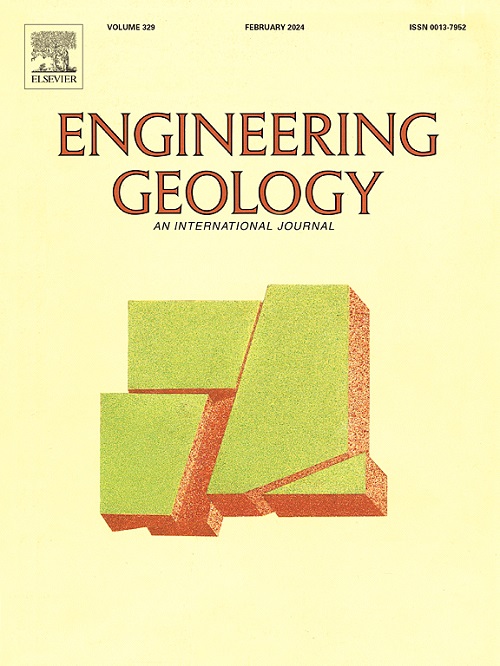Combining acoustic emission and unsupervised machine learning to investigate microscopic fracturing in tight reservoir rock
IF 6.9
1区 工程技术
Q1 ENGINEERING, GEOLOGICAL
引用次数: 0
Abstract
We use the acoustic emission (AE) and unsupervised machine learning to investigate the influence of bedding structures on the tight rock fracturing at the microscale, aiming to uncover the macro failure mechanisms relevant to oil and gas production engineering. We compared the AE characteristics of typical tight rocks, specifically tight sandstone and shale, under uniaxial loading both perpendicular and parallel to the bedding structure. Additionally, we applied unsupervised machine learning to cluster AE waveforms to analyze microscopic fracturing. The clustering results, constrained using the elbow method and silhouette score, revealed that a consistent number of three clusters was suitable for categorizing all samples. We then used the classification results, together with other AE parameters, to interpret the fractures influenced by bedding structures. Our results revealed that AE waveforms could be classified into three clusters, corresponding to microscopic fracturing, including tensile, shear, and mixed cracking types. Cracks formed under low-stress conditions tend to exhibit tensile failure modes, transitioning into shear fracturing before reaching peak compressive stress. Tight sandstones exhibited higher strength in their bedding structures compared to shale, possibly due to differences in pre-existing microcrack structure characteristics. This study advances our knowledge of tight reservoir rock failure mechanisms and provides valuable guidance for tight reservoir development engineering.
求助全文
约1分钟内获得全文
求助全文
来源期刊

Engineering Geology
地学-地球科学综合
CiteScore
13.70
自引率
12.20%
发文量
327
审稿时长
5.6 months
期刊介绍:
Engineering Geology, an international interdisciplinary journal, serves as a bridge between earth sciences and engineering, focusing on geological and geotechnical engineering. It welcomes studies with relevance to engineering, environmental concerns, and safety, catering to engineering geologists with backgrounds in geology or civil/mining engineering. Topics include applied geomorphology, structural geology, geophysics, geochemistry, environmental geology, hydrogeology, land use planning, natural hazards, remote sensing, soil and rock mechanics, and applied geotechnical engineering. The journal provides a platform for research at the intersection of geology and engineering disciplines.
 求助内容:
求助内容: 应助结果提醒方式:
应助结果提醒方式:


